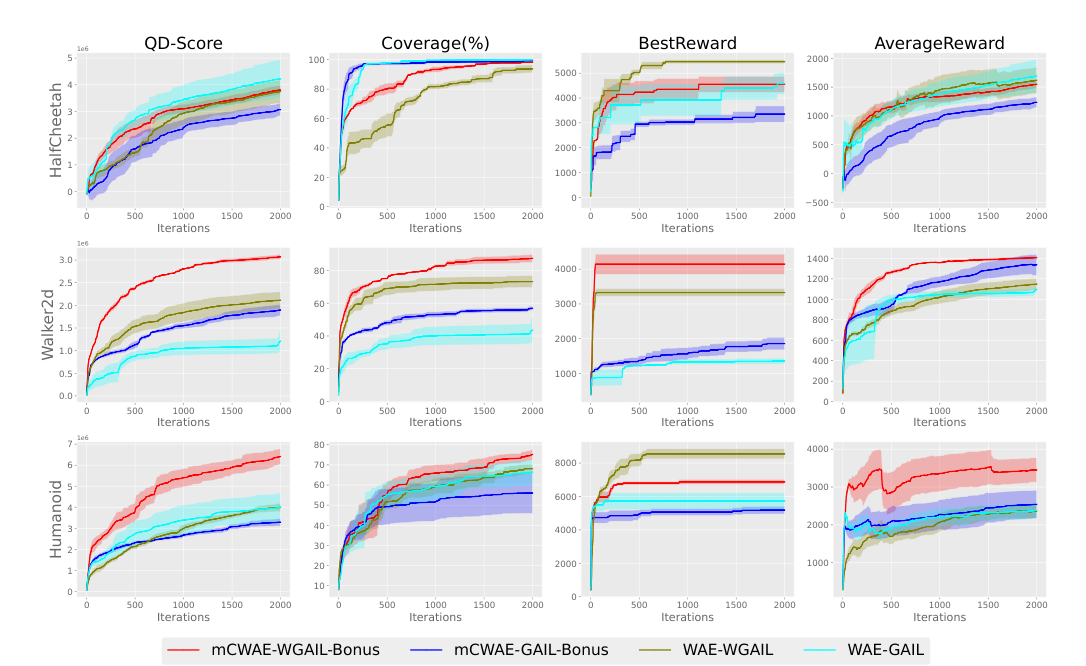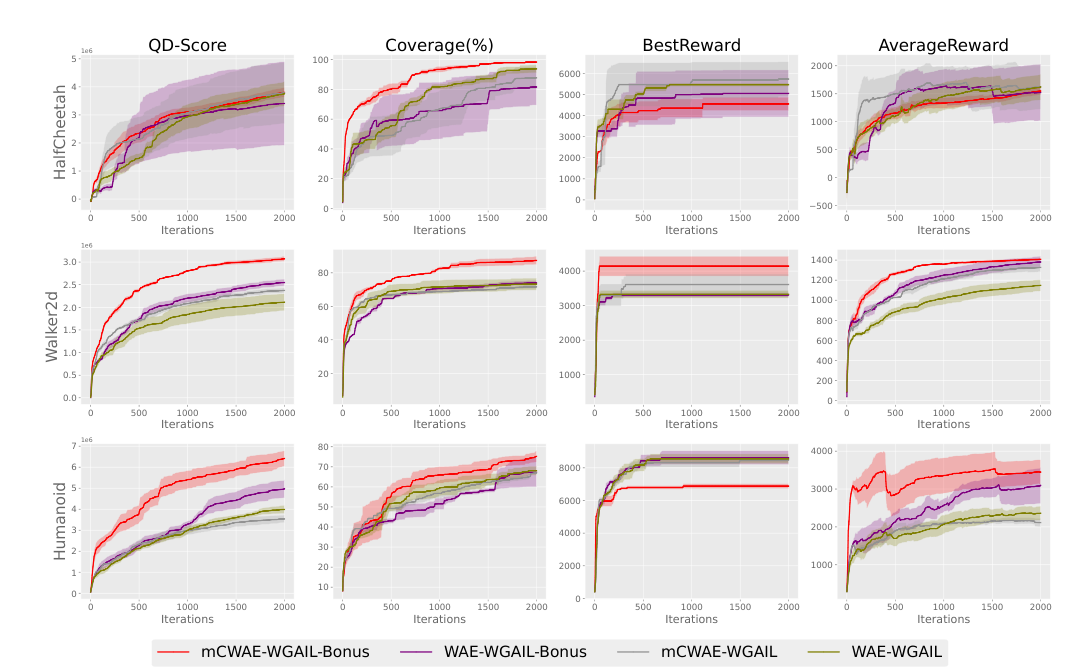Imitation from Diverse Behaviors: Wasserstein Quality Diversity Imitation Learning with Single-Step Archive Exploration
Xingrui Yu, Zhenglin Wan, David Mark Bossens, Yueming Lyu, Qing Guo, Ivor W. Tsang·November 11, 2024
Summary
WQDIL tackles the challenge of learning diverse, high-performance behaviors from limited demonstrations. It employs a latent adversarial training method based on Wasserstein Auto-Encoder (WAE) to enhance stability in quality diversity settings. Additionally, it mitigates behavior overfitting through a measure-conditioned reward function with single-step archive exploration. Empirical results show that WQDIL outperforms state-of-the-art imitation learning methods, achieving near-expert or beyond-expert quality diversity performance on MuJoCo continuous control tasks.
Introduction
Background
Overview of quality diversity and its importance in machine learning
Challenges in learning diverse behaviors from limited demonstrations
Objective
Objective of WQDIL: addressing the challenges in quality diversity learning
Aim to achieve high-performance behaviors with limited demonstrations
Method
Latent Adversarial Training
Explanation of the latent adversarial training method
Utilization of Wasserstein Auto-Encoder (WAE) for stability in quality diversity settings
Measure-Conditioned Reward Function
Description of the measure-conditioned reward function
Role in mitigating behavior overfitting through single-step archive exploration
Data Collection and Preprocessing
Methods for data collection
Data preprocessing techniques to prepare for the training process
Implementation
Architecture of WQDIL
Detailed explanation of the WQDIL architecture
Components and their functions in the learning process
Training Process
Overview of the training methodology
Steps involved in the latent adversarial training and reward function application
Results
Empirical Evaluation
Description of the experimental setup
Metrics used for evaluating WQDIL's performance
Comparison with State-of-the-Art Methods
Detailed comparison of WQDIL with other imitation learning methods
Results demonstrating WQDIL's superiority in achieving near-expert or beyond-expert quality diversity performance
Conclusion
Summary of Contributions
Recap of WQDIL's advancements in quality diversity learning
Future Work
Potential areas for further research and development
Impact and Applications
Discussion on the broader implications of WQDIL in various fields
Basic info
papers
machine learning
artificial intelligence
Advanced features
Insights
What are the empirical outcomes of using WQDIL on MuJoCo continuous control tasks compared to state-of-the-art imitation learning methods?
What mechanism does WQDIL employ to prevent behavior overfitting in quality diversity settings?
How does WQDIL utilize the Wasserstein Auto-Encoder (WAE) in its latent adversarial training method?
What is the main focus of WQDIL in the context of learning from demonstrations?







